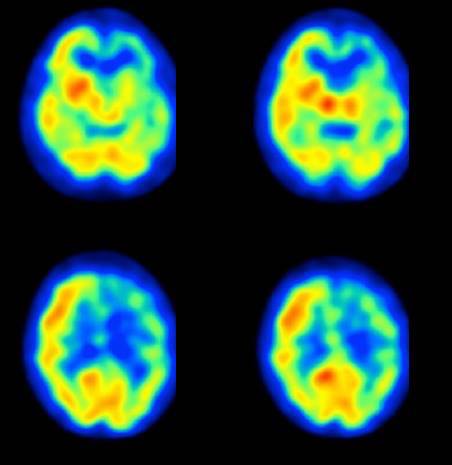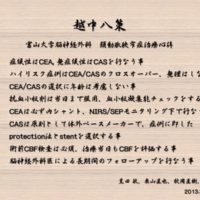再三、頚部内頚動脈狭窄症の話題で申し訳ありません。当科では、言語聴覚士の高岩亜輝子さんの長年の努力によって本疾患などに罹患した患者さんの高次脳機能についてのデータが膨大に蓄積されています。
今回、当科の秋岡直樹先生が、脳循環動態が頚動脈狭窄症による高次脳機能に及ぼす影響について詳細に解析しました。その結果、頚動脈狭窄症そのものが高次脳機能障害を招くという現象ばかりでなく、頚動脈狭窄症が高度となって脳循環不全を伴うと高次脳機能障害がさらに悪化すること、頚動脈内膜剥離術(CEA)あるいは頚動脈ステント留置術(CAS)を実施すると高次脳機能が有意に改善することを明らかにしました。その結果は既に昨年3月に「Q J Nucl Med Mol Imaging誌」という欧州の雑誌に電子出版されていますが、一年近く経つ今も紙媒体での出版がなされていません。なかなか面妖なジャーナルです。きちんと出版されてからFacebook上で公開するつもりでしたが、もう待ち切れないので公表させていただきました。

A Voyage to Depth of Neuroscience Vol. 26
Akioka N, Takaiwa A, Kashiwazaki D, Kuwayama N, Endo S, Kuroda S.
Clinical Significance of Hemodynamic Cerebral Ischemia on Cognitive Function in Carotid Artery Stenosis – A Prospective Study Before and After Revascularization.
Q J Nucl Med Mol Imaging. 2015 Mar 6. [Epub ahead of print]
http://www.ncbi.nlm.nih.gov/pubmed/25743128
Abstract
AIM:
Carotid stenosis is known to have negative impacts on cognitive function. However, it is still unclear through which mechanisms cognitive function is impaired in patients with carotid stenosis. This study was aimed to clarify the impact of cerebral hemodynamics on cognitive function in carotid stenosis.
METHODS:
This prospective study included totally 109 patients with carotid stenosis who underwent carotid endarterectomy (CEA) or carotid artery stenting (CAS). Using N –isopropyl–p–[1 23 I]–iodoamphetamine SPECT, cerebral blood flow (CBF) and cerebrovascular reactivity (CVR) to acetazolamide were quantitatively measured in all patients before and after CEA/CAS. Based on preoperative data, the patients were categorized into three groups: Type 1 (CBF≥32ml/min/100g, CVR≥10%), Type 2 (CBF≥32ml/min/100g and CVR<10%), and Type 3 (CBF<32ml/min/100g and CVR<10%). White matter lesions were categorized according to Wahlund grading. Cognitive function was evaluated with Repeatable Battery for the Assessment of Neuropsychological Status (RBANS) before and 3 months after CEA/CAS.
RESULTS:
Before CEA/CAS, total RBANS score was significant lower than the age–matched controls, 84 ± 14 in Type 1 group (n=56), 82 ± 12 in Type 2 group (n=43), and 70 ± 12 in Type 3 group (n=10). Especially, Type 3 patients had further lower score than Type 1 (p=0.008) and Type 2 (p=0.039) patients. There were no significant differences in white matter lesions among three groups. Total RBANS scores significantly improved at 3 months after CEA/CAS in all three groups, and the difference among them completely disappeared.
CONCLUSIONS:
These findings strongly suggest that carotid stenosis itself impairs cognitive function and compromised hemodynamic ischemia further declines it. CEA/CAS significantly improve cognitive function. The beneficial effects are most notable in patients with reduced CBF/CVR.









